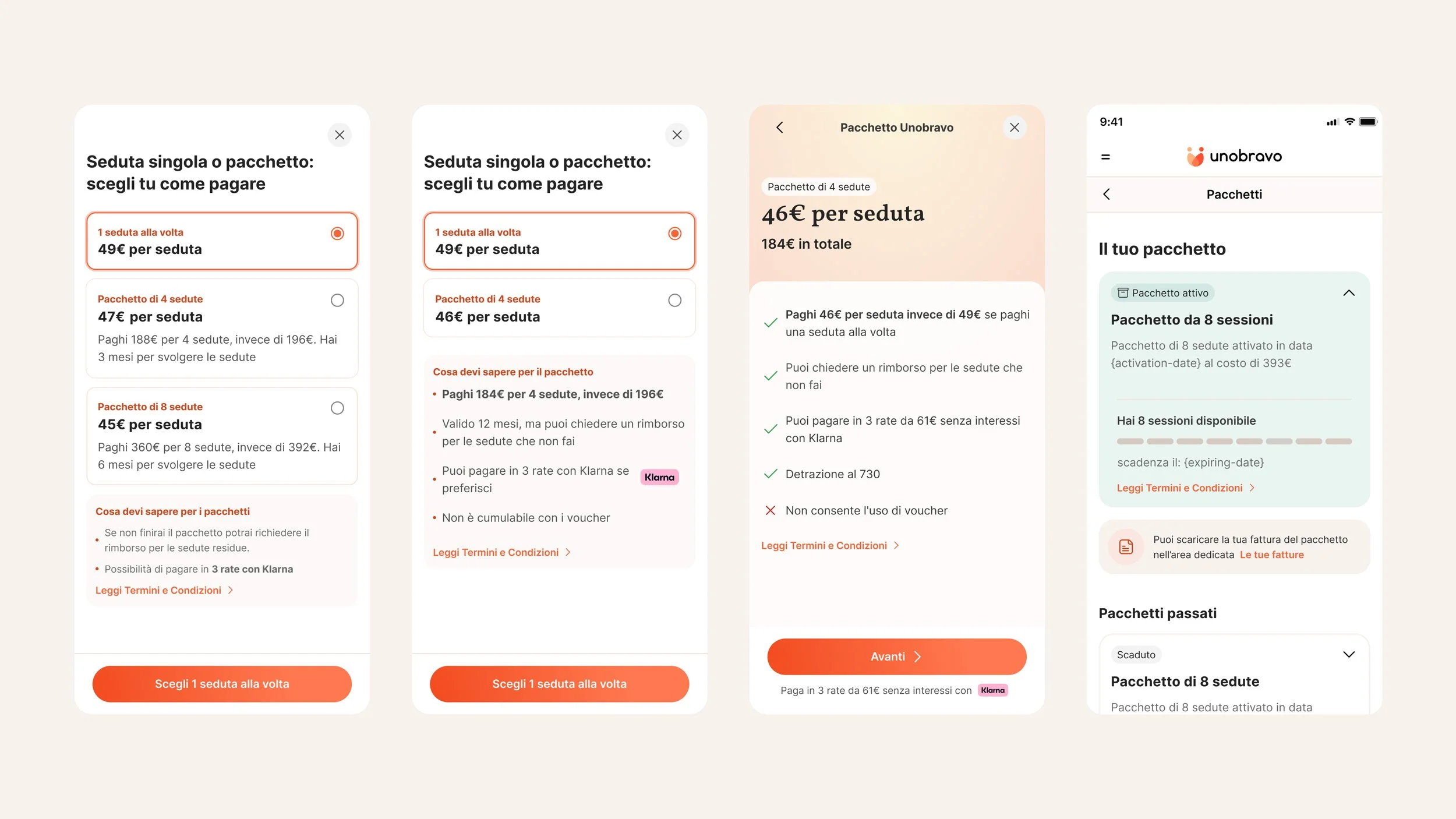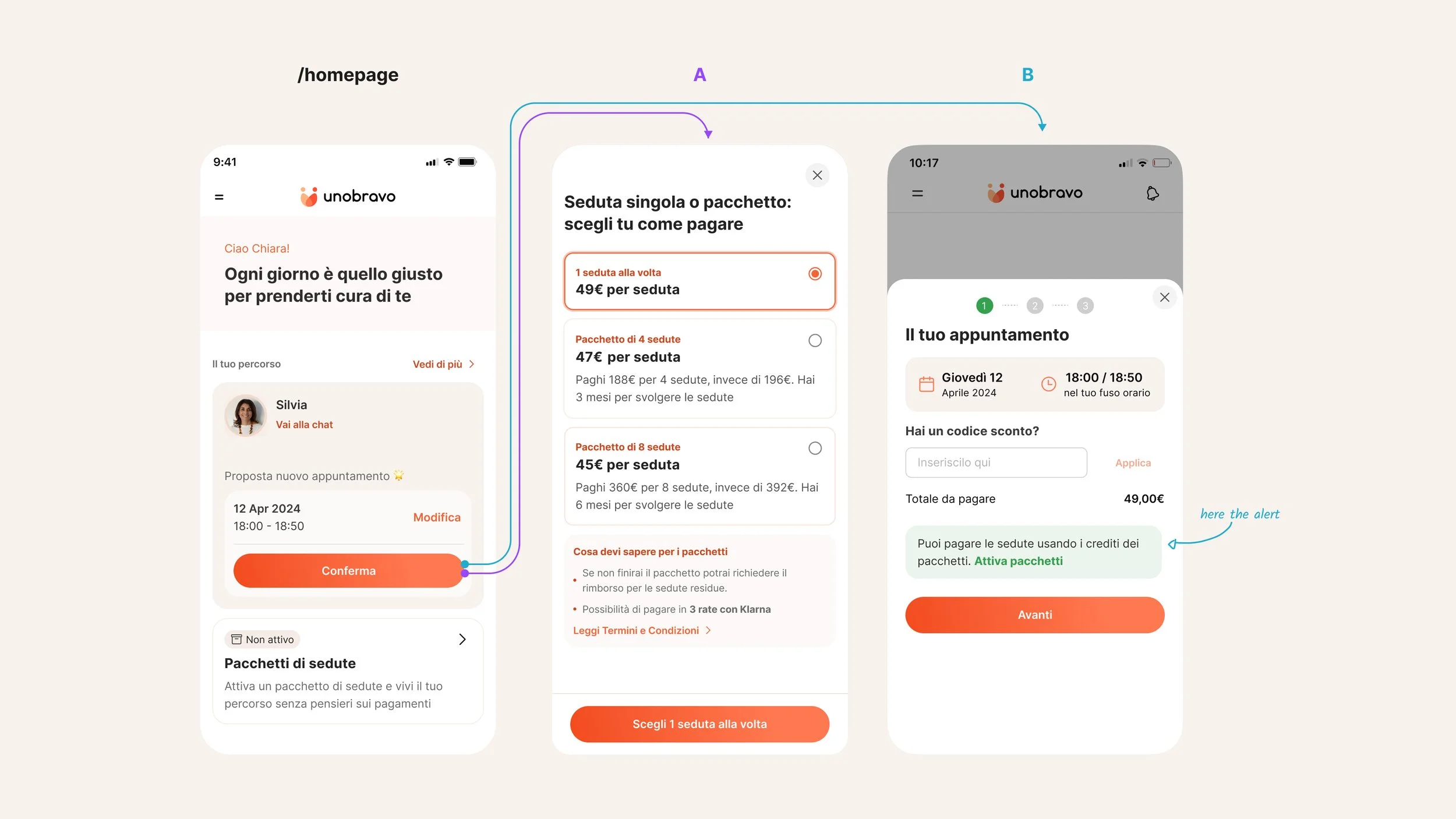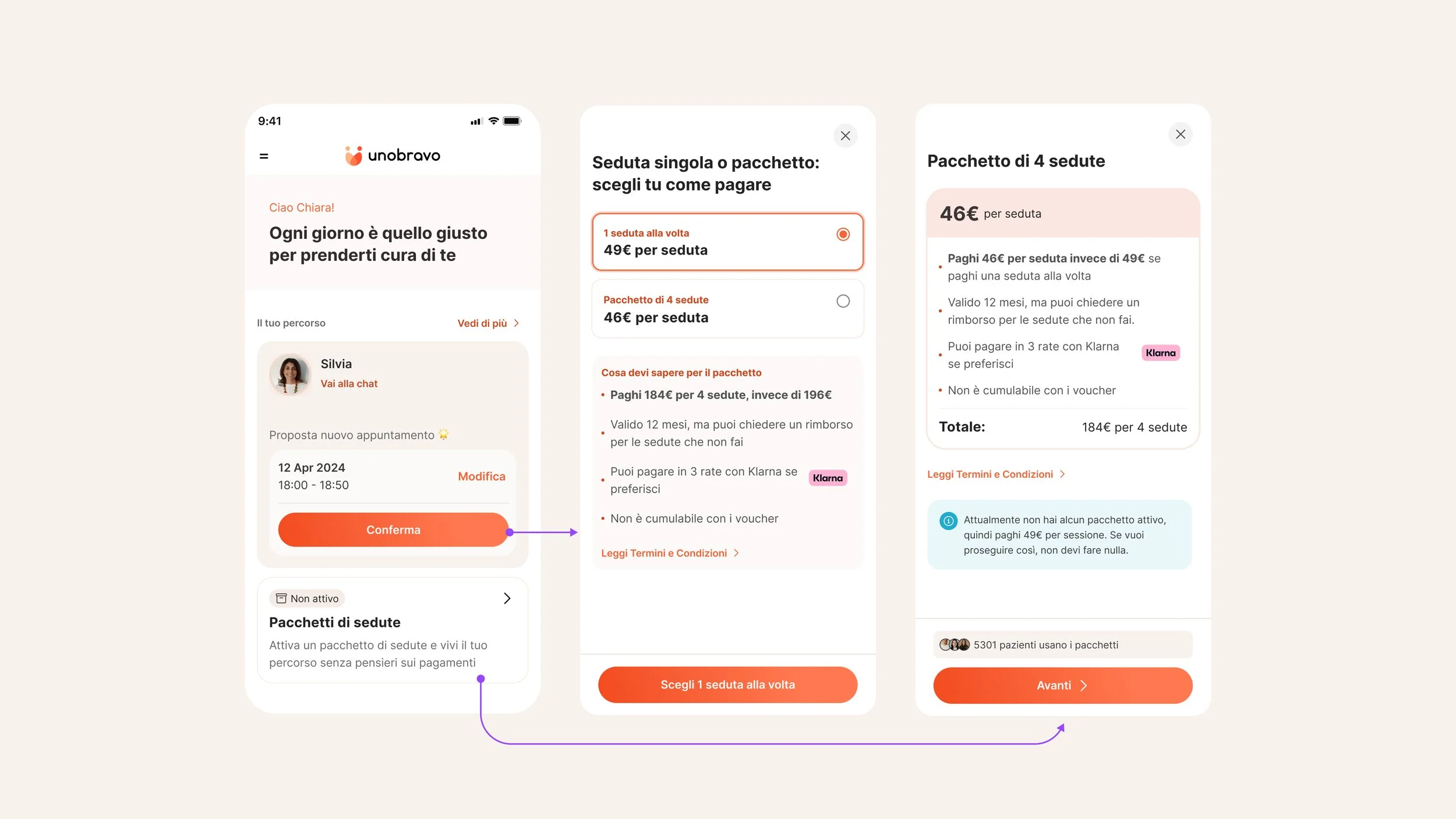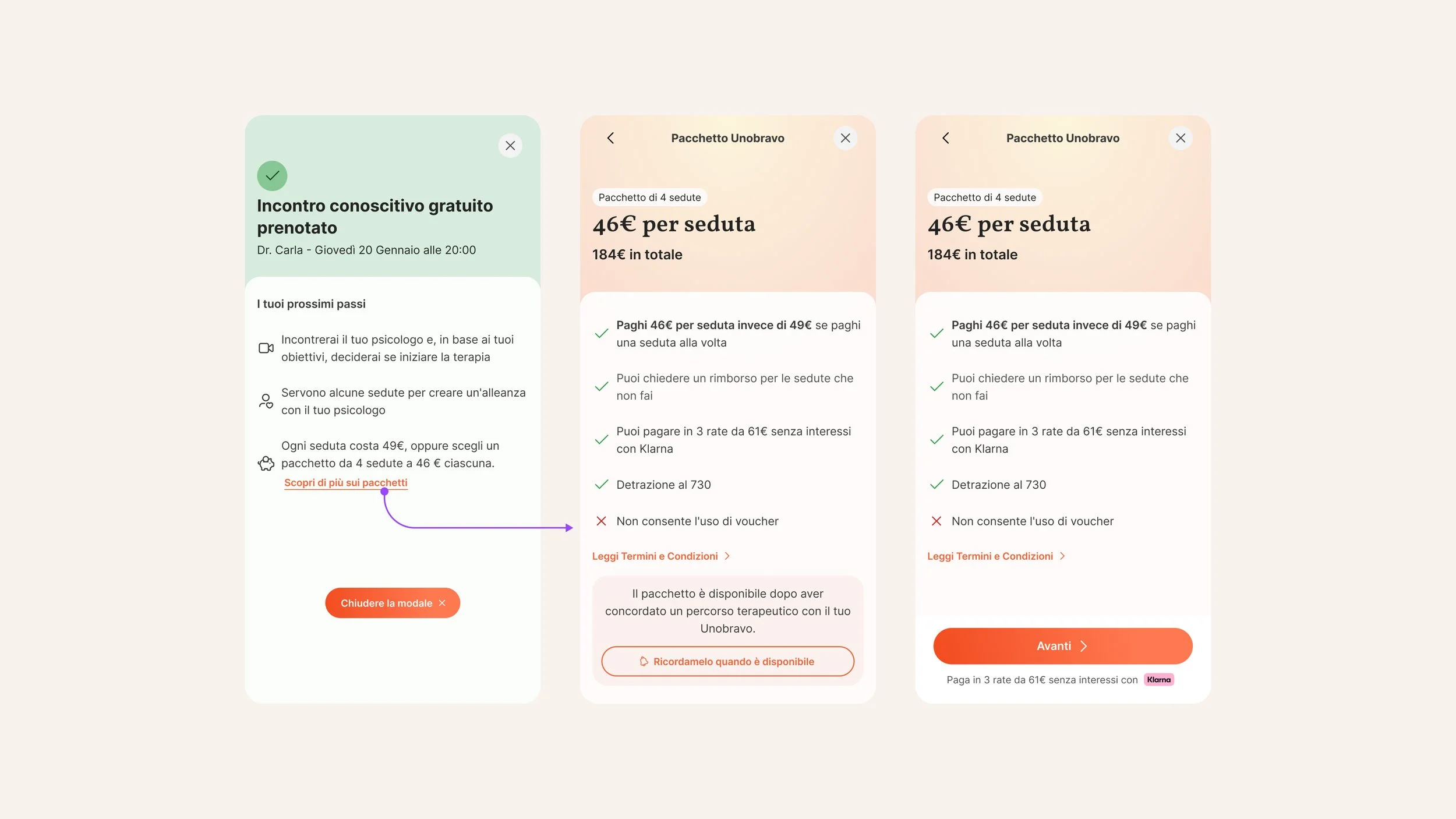Unobravo Case Study
Therapy Bundles
A case of three round A/B tests in which we learned about user expectations and therapy habits
Solution overview
Therapy is a journey—it comes with ups and downs, and staying consistent isn’t always easy. With this in mind, we explored the idea of introducing session bundles as a new payment option.
Our key assumptions were:
🔑 Greater commitment: Buying a bundle upfront would encourage users to stay consistent, since they commit to a set number of sessions.
🔑 Reduced early drop-off: Bundles give users more time to experience therapy and see its benefits, which often take time to emerge.
🔑 Improved conversion: As a result, this could positively impact overall conversion rates.
We ran three rounds of testing, which you can explore below 👇
Round 1 - First A/B/C Test
👉 A - Touch point 1: show a sort of paywall when user is going to pay the session
👉 B - Touch point 2: show an alert in the first step of the payment flow introducing the bundle option
👉 C - Control: users without bundle option
Learnings
Many users in Option B were not aware of the bundle offer — the alert was likely unclear or failed to capture their attention during the confirmation flow.
Users struggled to decide between the two bundle types, and details such as expiration dates and Klarna payment options were not communicated clearly enough.
Round 2: A/B Test based on previous test learnings
👉 A: We tested a new version of the touch paywall featuring only one bundle option, while making details about expiration dates and Klarna payments clearer and more prominent.
We also explored new assumptions by introducing a social proof element, highlighting the number of users who had already chosen the bundle option
👉 B - Control: users without bundle option
Learnings
Introducing the paywall during the confirmation flow turned out to be counterproductive: instead of encouraging bundle purchases, it often discouraged users from completing the confirmation itself, increasing the risk of drop-off.
There were still many open questions from users regarding payment methods, tax deductions, cancellations, and other related details.
Round 3: A/B Test from previous test learnings
👉 A: Rather than interrupting the confirmation flow with a paywall, we chose to contextualize the bundle at a more natural moment. The offer is now presented on the thank-you page, when users have already confirmed their session and are beginning to get familiar with the service.
👉 B Control: users without bundle option
what we learned after all?
Removing the paywall brought our conversion rate back to a more stable level.
While bundles were appreciated, most users still preferred to pay per session. The main reasons were:
▪️Uncertainty about how long their therapy journey would last.
▪️High upfront cost of the bundle, which felt like too big a commitment.



